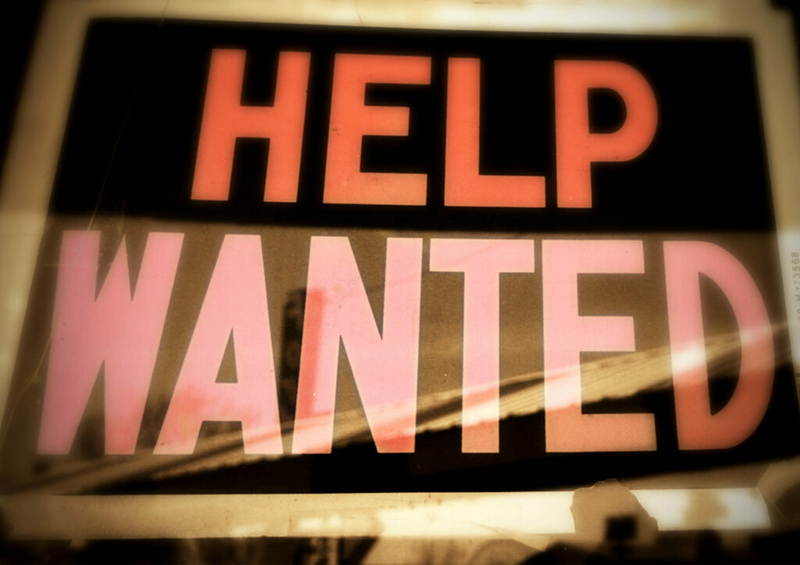Making the simple impossible: We don’t want to admit the real worker shortage problem

A week ago, I was talking to an educator whose job it is to run training programs for students and adults in higher education. She told me that around a dozen different companies and groups were sponsoring training courses for things like nursing assistants, medical workers, electricians and truck driving.
All of the courses were being underwritten by businesses and organizations in hopes of finding workers for jobs that are – and have been open – for some time. Classrooms were available. Instructors were ready. But only one class had enough students to hold the class.
Of all the things COVID-19 has taken from us – freedom to travel, a feeling of safety when going to the store – one of the most profound has been the change in workforce.
I asked, “So where are all those students and workers?”
“You’re the journalist. You tell me,” she replied.
The workers and students that seemed more plentiful before 2020 have disappeared. We could speculate that they’ve wandered off to other states, other areas, but we know other towns and states are struggling with the same workforce shortage. And the demand for housing has rarely been greater.
While the statistics look good on paper – including Montana’s historically low unemployment rate – the hidden truth behind those numbers is that those surveys include people who are actively looking for jobs or are in the workforce presently. What it doesn’t quite capture is the one statistic we need most: How many of the people have dropped out?
There are certainly a lot of practical questions that “non-participating” workers raise: How are they living? Where are they living? And what would make them come back?
Those aren’t the topic of this column, instead they are at the front of what journalists are trying to solve, discover and report.
Instead, I wonder if we’re overthinking the issue a bit.
The workforce shortage issue is being framed as an economic problem – employers can’t find enough workers and wages don’t seem to entice them.
Yet, maybe there are drivers of this wave of joblessness that we all know, but don’t really want to tackle. Maybe we just don’t like what the workforce shortage is telling us, and so we search for other more complex, nuanced interpretations.
As an observer and reporter, I think maybe the answer to the workforce shortage is a combination of time and fatigue.
American productivity, an actual calculation maintained by the government, shows that Americans have consistently been working harder and putting in more hours while wages have remained stagnant. In some cases, workers have been above 100 percent capacity, meaning they’re putting in more work and longer hours above what is expected in an effort to simply keep pace. In an effort to cling to good jobs, workers have been pushing themselves hard. In short, the economy was, to borrow a phrase, punching above its weight.
Meanwhile, inflation and housing prices have continued to escalate faster than wages, meaning those already overworked workers are doing more, falling farther behind. And no one wants to worker harder to find themselves deeper in a hole.
And that leads me to time: While it seems like COVID has been one long episode of “Groundhog Day,” it’s now been more than two years since the disease has impacted the American economy and the country. While not an expansive amount of time, it’s enough for workers to change their habits, expectations and start over.
Maybe – just maybe – workers have downsized, found a new path, or readjusted to what they can or should expect. They’ve had plenty of time to think about working 40 to 80 hours per week and still not being able to afford housing or food. They may have decided: It’s just not worth it. Whether that means living with family or friends, living in a much smaller place, or finding a new career, people are fatigued and not going to back to how it was.
This also seems to be a crisis of mental health, hidden by the extreme consequences of COVID itself. We keep tabs on the hospitalizations and deaths, but calculating mental health problems is more nebulous. I suspect part of the key to the where-are-the-workers mystery could likely be told by mental health professionals. I would wager they’re seeing depression, burnout and anxiety from folks that might have otherwise never seen a counselor. One of the hidden costs of the virus has been the toll the disease has taken on the already frazzled worker.
Maybe we’re just making this whole situation too complex – as if there’s some undiscovered enclave of workers playing hide-and-seek. That would be an easy sort of problem to wrap your mind around.
Instead, after several years of reporting what is happening, a different narrative may be emerging, and it’s even more scary than the prospect of COVID itself. It’s what happens when the notion of the American Dream – a home, a career, a retirement – starts to evaporate.
When the American Dream ceases to become a vision that can be realized, people simply quit dreaming.
And if there’s nothing to work for, nothing to build toward, it would certainly stand to reason that there’d be a lot of empty classroom seats and a lot more “Help Wanted” signs.








